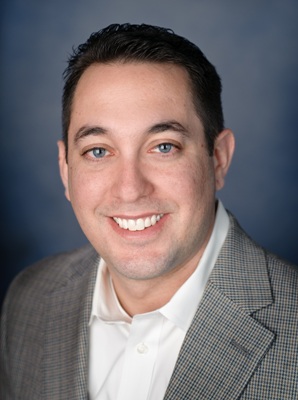Oct 3 2012
Motion capture technology revolutionized filmmaking, animating fantastic characters with realistic movements. Films like James Cameron’s Avatar use sophisticated methods of capturing movement and even facial expressions to create imaginative and immersive experiences. Similar technology is now spurring innovation in science and engineering.
 Dr. David Cappelleri
Dr. David Cappelleri
Principle Investigator (PI) Dr. David Cappelleri, and co-PI’s Dr. Philippos Mordohai, Dr. Antonio Valdevit, and Dr. Mark Blackburn of Stevens Institute of Technology have received a grant from the National Science Foundation (NSF) for a large volume, real-time, high resolution motion capture system to aid in the development of robotics, vision and control technologies that will help find and rescue people during emergencies, explore dangerous and unpredictable areas for military or scientific purposes, map unknown terrain, conduct detailed 3-D surveillance, enhance athletic performance, and help people walk again.
According to Dr. Michael Bruno, Dean of the Charles V. Schaefer, Jr. School of Engineering and Science, “This major research instrumentation, guided by the talent and vision of our researchers, will accelerate the delivery of transformative technologies into the marketplace while supporting educational initiatives and enhancing the research learning environment at Stevens.”
Unique in the region for its focus on robotics and control, the system captures fine details and the most subtle of movements in a large-volume environment. Twelve high-resolution motion capture cameras will be mounted on the walls and ceiling of a sizable room at Stevens, and markers will be affixed to the objects to be tracked in 3D space. Motion data is streamed to a computer, where it can be used by third party applications for a multitude of research purposes, most pressingly for work in robotics and control.
Dr. Cappelleri gains valuable instrumentation for his research on micro-aerial robots, which can be controlled precisely in order to fit through small spaces and reach areas that are inaccessible for humans and existing equipment. The robots provide highly promising capabilities for search and rescue operations, surveillance, building exploration, communication relay, and mapping. Dr. Cappelleri can currently control the attitude, or orientation about the center of mass, for his vehicles, and the motion capture system allows him to combine the attitude control with position control. This means that the vehicles can dynamically maintain a specific position in a shifting environment, or accurately and effectively move to a certain position in three-dimensional space.
The system will also allow researchers to compare robot collaboration algorithms for ascertaining the “ground truth” location from the motion capture system, and researchers use the results to fine-tune their approach. Stevens researchers across multiple disciplines are applying this idea to the development of heterogeneous active sensor teams for environmental monitoring and mapping, the control of mobile robot networks, and the coordination of human-robot teams for facilitating labor-intensive tasks like search and rescue or source-seeking.
“This advanced motion capture system creates a physical and conceptual space for faculty to collaborate at the highest tier of robotics and control research, galvanizing ongoing fundamental research and expanding the scope of emerging research activities,” says Dr. Constantin Chassapis, Deputy Dean of the School of Engineering and Science, and Director of the Department of Mechanical Engineering.
In addition to robotics, the motion capture system will be used in biomechanical applications to develop human tracking algorithms for analyzing and improving performance, whether in a medical rehabilitation or athletic performance setting. The system will monitor and analyze the gait of an individual and correlate that data with force sensors to build a database of gaits which can be used to help increase human performance. This information also promises to revolutionize knee and hip arthroplasty by allowing researchers to customize implants for specific patients.
Researchers will set up the system in a cutting-edge laboratory in the Altofer building at Stevens. It will provide a central location to collaborate and work on problems that are shared across disciplines